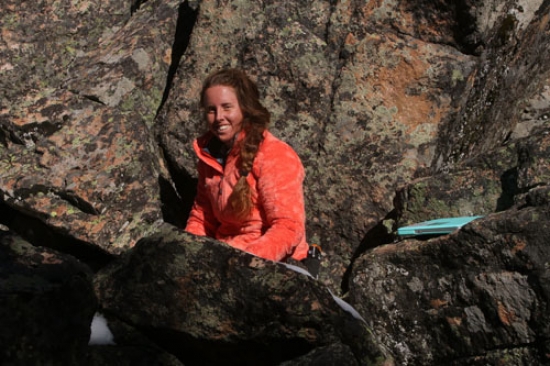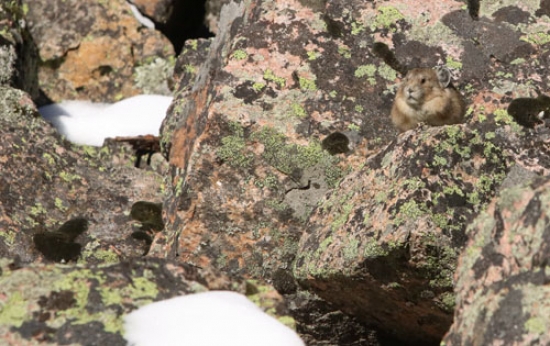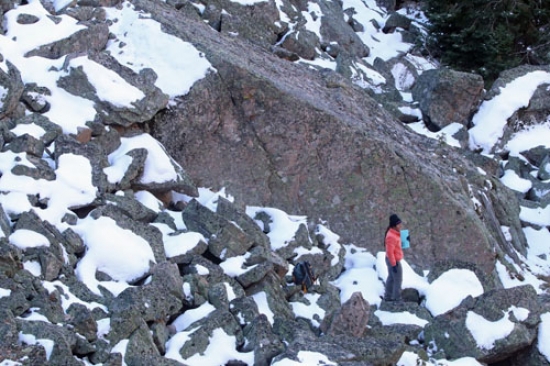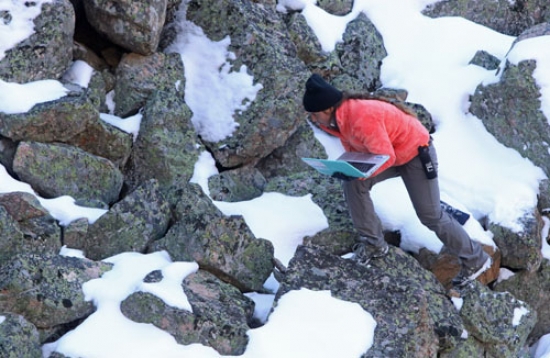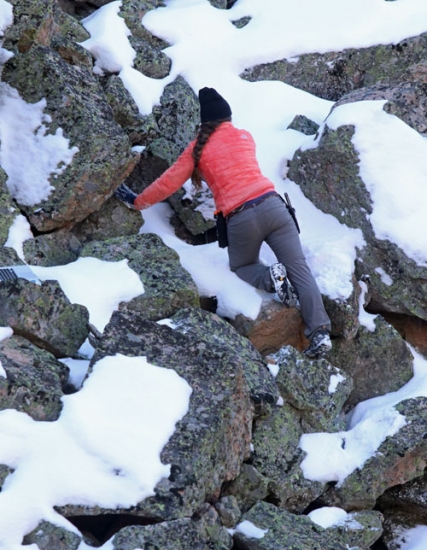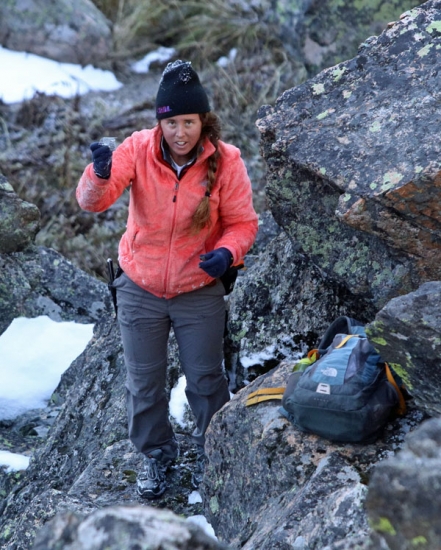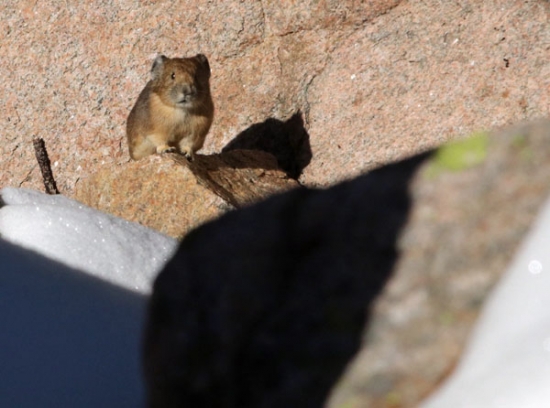Guest Writer, Kaitlyn Hanley
A Pikas Taleby Dan Hartman
Oct. 8, 2017
I first met Kaitlyn some two and a half years ago when I did a talk for David Tonkyn's college group from Clemson. At the end of the talk Kaitlyn informed me she was trying to get a grant to research pikas the following summer.I remember tossing her a stuffed pika, telling her it was to remind her of her goal.
Sure enough, the next summer her and her assisatant Katie, arrived to start a two year study. Katilyn even appeared in the BBC-PBS mini series Great Yellowstone Thaw as the pika expert.
Last week Kaitlyn was back to retrieve her data loggers. I went out with her one morning and was impressed by her commitment to find as many loggers as possible now buried under a foot of snow.
Kaitlyns Story:
On a crisp fall morning I start to climb upslope. I scramble over rocks, hesitant to put my foot down in the snow because, after all, it might turn into a giant hole. I balance my open laptop in one hand hoping I am skilled enough to keep it from tumbling down. One may think carrying a computer around on talus slopes and boulder fields is a bit crazy but this is just a typical morning for me.
I am a master's student at Clemson University's Department of Biological Sciences but around her I am known as "one of those pika girls". Throughout the summer, my research assistant, Katie and I have frolicked around the Beartooth Mountains and Yellowstone collecting data on pikas, a small mouse-looking alpine rabbit. Pikas are found on talus (rock slides that collect under cliffs) habitats in the alpine. Living in the extreme makes them susceptible to warming temperatures, which can lead to lethal heat stress in the summer and loss of insulating snow cover in the winter. They do not hibernate, but instead collect vegetation into haypiles to sustain them through the long winter. Because of its sensitivity to temperature, the pika is considered an indicator species for climate change and provides information on how the warming temperatures will disrupt the alpine ecosystem. Recently, there have been reports of pika populations disappearing throughout the west causing many to be concerned. However, there have also been discoveries of new populations at even lower elevations than previously known. How can a species so sensitive to temperature survive in areas known for high summer temperatures? It all links into me, climbing on rocks with pricey technology.
It turns out that the talus slopes can maintain cool temperatures throughout the summer and , when covered in snow in the winter, they can maintain warmer temperatures. Simply put, pikas have an in-home AC and heater but how well talus slopes maintain these temperatures are dependent on many features including rock size, depth, and what direction the slope is facing. Now, why am I climbing all over the talus? I want to know what types of temperatures pikas experience daily on the surface as well as inside the talus and if these temperures will allow pikas to adjust to climate change. To do this, I deployed small data loggers that collect temperature measurements every ten minutes for a year. To remember their location, I took photos of the talus and use distinct landmarks to rediscover the data loggers. That leaves me, scrambling on rocks this week, hoping to find precious data that may help us better understand how pika handle extreme temperatures. This knowledge can lead to better management plans and hopefully lead to many people enjoying pika for generations to come, instead of just reading about them in biology textbooks.
